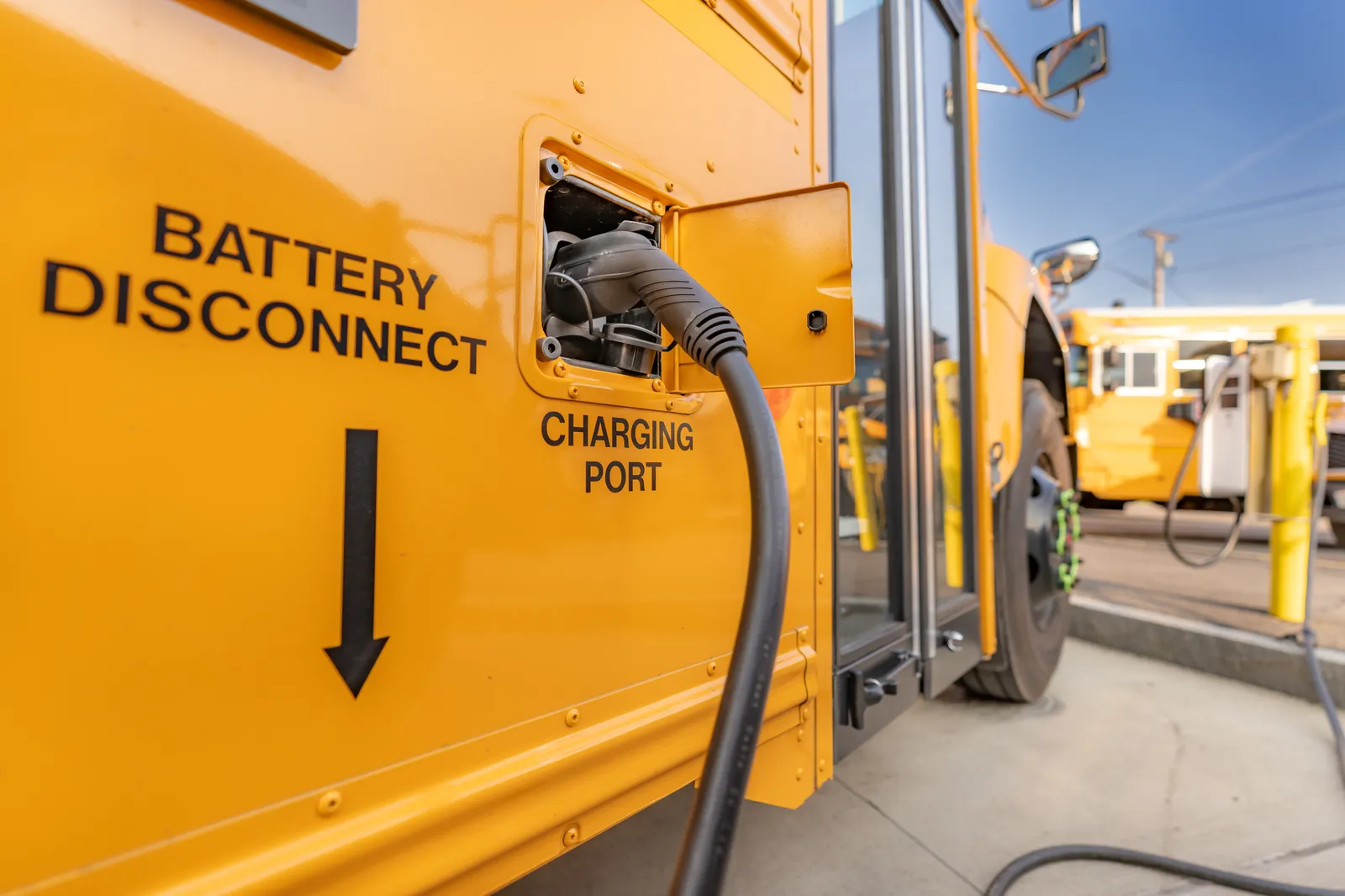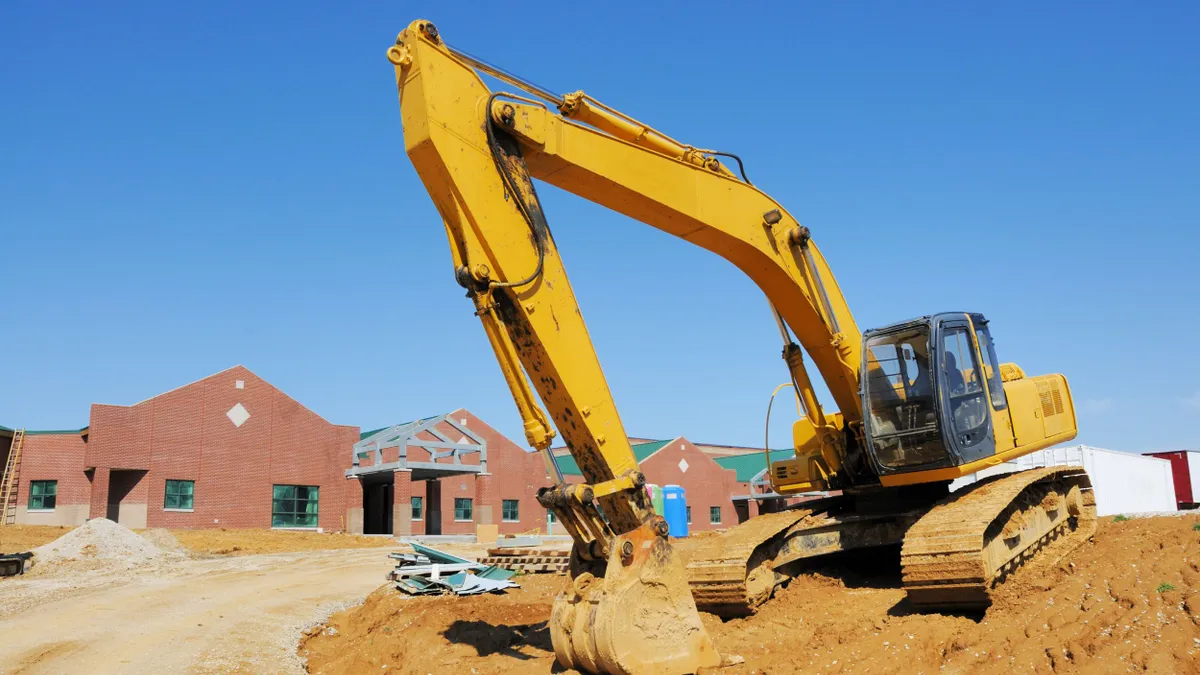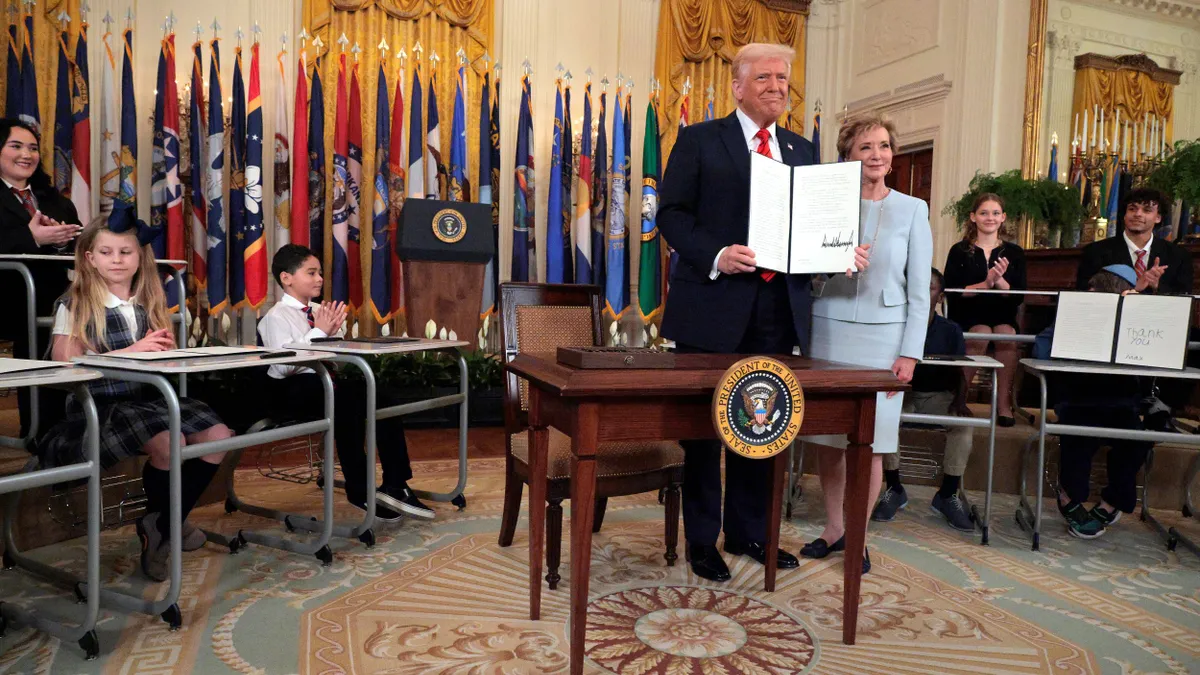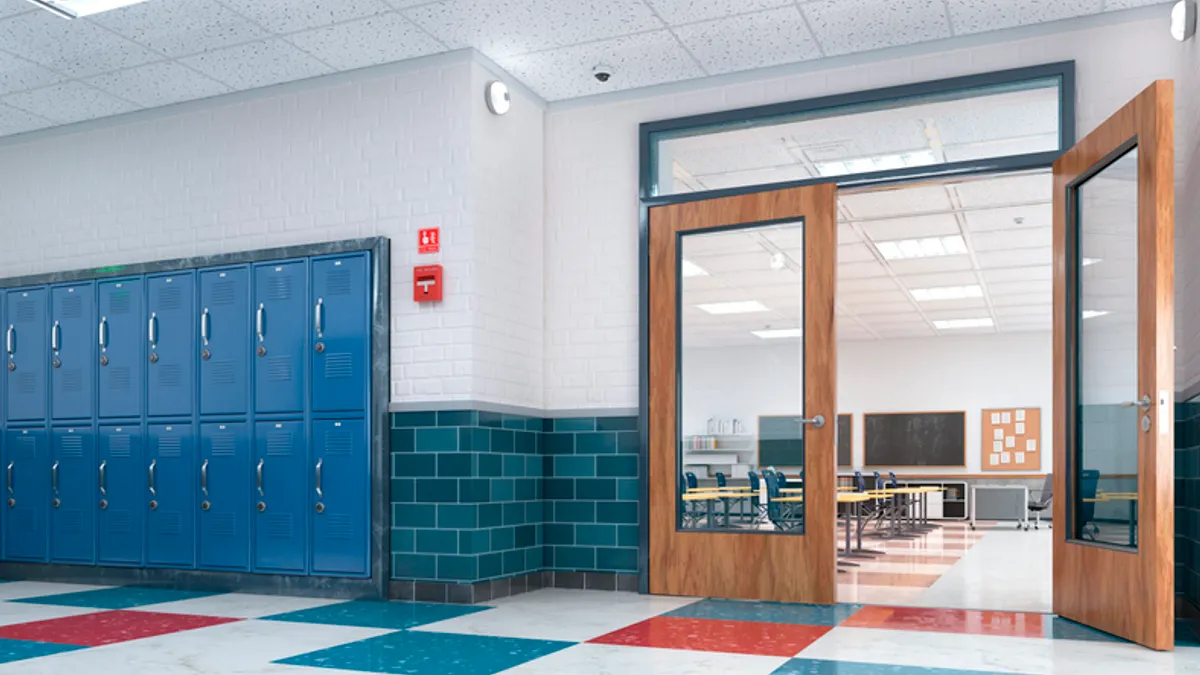With the help of a $5.5 million grant from the Environmental Protection Agency, West Aurora School District 129 in Illinois is purchasing 27 electric school buses from a Canadian company that has a factory in the state.
But now there’s a chance that the factory, run by Lion Electric, will shut down or make some budget cuts, said Angie Smith, the district’s associate superintendent of operations and chief school business official.
It’s a time of major uncertainty for schools nationwide as K-12 leaders wait to see if President-elect Donald Trump will follow through on his promises to impose drastic tariffs on Canada, China and Mexico. In a Nov. 25 Truth Social Post, Trump announced his plans to impose a 25% tariff on Canada and Mexico until drug trafficking and illegal immigration into the U.S. cease.
Such changes could impact certain big purchases by school districts — including for electric school buses and construction projects.

In the case of West Aurora SD 129, Smith said she wonders if Lion Electric’s operations will return to Canada. If so, Smith has asked the company if that will mean higher prices for the new electric buses, which are due to be delivered to the district by August 2025. The answer to that question is still unclear, she said.
“It’s all speculative, so it just makes that a little bit more complicated, because we budgeted and forecasted based on” the company operating in Illinois, Smith said. “If something were to change there — what does that change to our pricing?”
A hit to the construction industry
If Trump carries out his plan to sharply raise tariffs and initiate mass deportation of immigrants, the construction industry will take a hit to both materials and labor, said Ken Simonson, chief economist at The Associated General Contractors of America.
Tariffs are a “threat to construction,” especially given that lumber is heavily imported from Canada, Simonson said.
Additionally, Trump’s plan for mass deportation comes as 33% of construction trades workers are immigrants, according to an analysis by the National Association of Home Builders.
“Any moves that reduce that number or frighten people away from showing up at identifiable job sites, that’s going to be hard on construction, and it means the industry will be even more shorthanded than it has been,” Simonson said.
That strain on the workforce could lead to many construction projects getting delayed, which would stretch out completion times, he added.
Still, it’s not yet certain if tariffs or mass deportations will occur, Simonson noted. But if those policies are implemented, schools could see higher costs and delays on their construction or renovation projects.
Bracing for tariff impacts on K-12 budgets
If Trump’s proposals drive up the cost of construction projects, it’s likely schools will have to put construction and renovation projects on the back burner.
A majority of districts’ budget expenses are tied to hiring and benefits, Smith said, so construction is often the first item to face budget cuts so that instruction is not directly affected. “Schools try to protect the classrooms, but we don’t have that much other stuff that we can cut.”
The U.S. Department of Energy has estimated that schools nationwide already need about $270 billion for infrastructure repairs because of deferred facility maintenance. In recent years, many school districts tapped into federal COVID-19 emergency funds to cover facility costs, but experts said the needs still outweigh what was covered by the historic one-time funding.
When schools have to delay maintenance projects, Smith said, costs can rise in the long run if emergency repairs are needed.
“It’s a lot easier to take care of what you have than to have to replace it because you didn’t take care of it. And that’s the danger when you start to cut capital project budgets.”

Angie Smith
Associate superintendent of operations and chief school business official at West Aurora School District 129
To try to avoid cuts altogether, Smith said her district is discussing the possibility of dipping into its savings account. She added that it helps that district officials try to overestimate expenses and underestimate revenues to help build an extra cushion for budget adjustments. But, Smith said, not every district is able to implement those strategies.
Regardless, it’s important for districts to be as transparent as possible with their community and school board about what could happen — and how officials are prepared to handle any budget shortfalls, Smith said.
As far as trying to stay ahead on school construction costs, Simonson suggests districts communicate as much as possible with all players in the process, including architects, engineers, contractors and material suppliers.
What schools are less worried about — for now
The impact of Trump’s proposed tariffs on school purchases for commodities like food, classroom supplies and technology devices are less clear, but they are also less likely to put a dent in district budgets, Smith said.
When it comes to the food served in cafeterias, K-12 food services are required by law to buy “to the maximum extent practicable, domestic commodities or products,” according to the U.S. Department of Agriculture.
“However, K-12 programs are already struggling with high costs, so any additional price impacts would be a concern,” said Diane Pratt-Heavner, director of media relations at the School Nutrition Association, in an email.
As for school supplies, Smith doesn’t expect tariffs to noticeably impact those district purchases, because “a lot of that stuff is so cheap.”
West Aurora SD 129 also doesn’t foresee challenges with technology purchases, as its technology partners have not warned of any price increases yet, she said. She also noted that the district maintains a replacement cycle where a quarter of new devices are purchased each year, so total increased costs would be phased in as well.
Smith is worried, however, about the shaky future of federal funds used to connect schools to affordable broadband services now that the E-rate program’s fate is in the hands of the U.S. Supreme Court. If those funds go away, she said, schools could be scrambling.
Without E-rate, many districts would have to find ways to cover higher-priced technology for school networking on their own, Smith said. “You could see some issues there.”






















